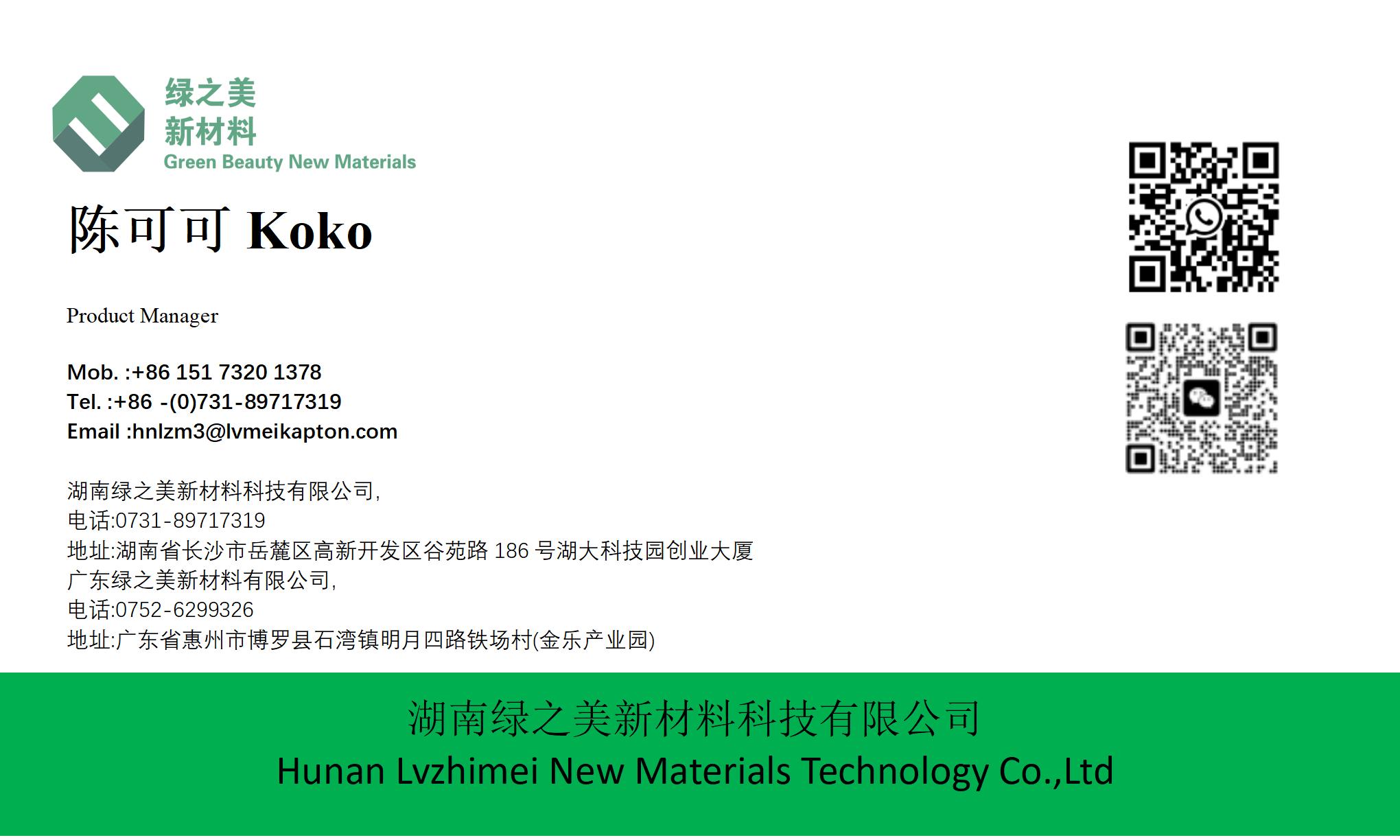hnlzm@lvmeikapton.com
+86 13787123465


Hunan Lvzhimei New Material Technology Co., Ltd.


NameDescriptionContent
Which Specifications Define Premium Adhesive PET Material High Temperature Tape? |https://www.lvmeikapton.com/
Source:
|
Author:Koko Chan
|
Published time: 2025-07-22
|
12 Views
|
Share:
Automotive coating plays a crucial role in protecting the vehicle body and enhancing aesthetics. Steel-based car bodies are prone to corrosion without coatings, which can significantly shorten their service life. The coating film acts as a "armor" to resist corrosion, oxidation, UV radiation, and other environmental hazards, ensuring long-term durability. Additionally, coatings contribute to the vehicle’s visual appeal through vibrant colors, smooth finishes, and refined textures. Different coating effects can showcase diverse styles, meeting consumers' aesthetic demands and boosting market value.

1. Introduction1.1 Importance of High-Temperature PET Tape in IndustryHigh-temperature PET tape plays a critical role in various industries, including electronics, automotive, medical, and aerospace. In electronics, it is used for component fixation, solder mask protection, and insulation during PCB manufacturing, ensuring reliability in high-temperature processes like reflow soldering. Automotive applications involve wire harness bundling and interior component bonding, where resistance to heat, chemicals, and vibrations is essential. In medical devices, PET tape with biocompatible properties is crucial for insulation and protection of sensitive circuits, meeting stringent safety standards. Its versatility and performance under extreme conditions make it indispensable in driving technological advancements across sectors.
2. Key Specifications Defining the Quality of PET Tape
2.1 Thickness UniformityThickness uniformity is a critical parameter,直接影响insulation effectiveness and process precision. High-quality PET tape should maintain thickness within ±0.005mm tolerance. Uneven thickness can lead to inconsistent insulation, potentially causing electrical failures or assembly errors in automated production lines. Manufacturers achieve this through advanced coating techniques, real-time thickness monitoring, and stress-relief treatments to ensure uniformity across the tape width and length.
2.2 Adhesion StabilityAdhesion stability under high temperatures is vital to prevent tape detachment or adhesive residue during thermal processes. Key assessments include initial tack, holding power (shear resistance), peel strength, and adhesive aging tests at elevated temperatures (e.g., 150°C-200°C). Factors influencing stability include adhesive formulation (e.g., silicone vs. acrylic), surface treatment of PET substrate, and environmental conditions. Premium tapes maintain strong adhesion even after prolonged exposure to heat, chemicals, or mechanical stress.
2.3 Dimensional StabilityDimensional stability ensures tape remains flat and dimensionally consistent during thermal cycling or long-term use. TMA (Thermal Mechanical Analysis) and dimensional change rate tests measure expansion/shrinkage under heat. To control stability, materials with low thermal expansion coefficients (CTE) are used, combined with stress-relief annealing processes. This prevents warping or curling in applications like SMT component mounting, where precise alignment is critical.
2.4 Electrostatic Dissipation PerformanceIn electronics manufacturing, static discharge can damage sensitive components. High-quality PET tape incorporates antistatic additives or conductive coatings to dissipate charges safely. Surface resistivity (10^6-10^9 Ω/sq) and static decay time metrics ensure tapes meet ESD protection standards. This feature is essential in environments handling semiconductors or LCD panels.
2.5 Optical TransparencyTransparent PET tape is crucial for applications requiring light transmission, such as touchscreens, optical sensor protection, or LED module assembly. High transparency (≥90% light transmittance) is achieved through crystal-clear PET film and adhesive formulations free of haze or impurities. UV-resistant coatings can further protect underlying components from light degradation.
2.6 Halogen ContentEnvironmental regulations (e.g., RoHS, REACH) restrict halogenated materials due to their toxic byproducts during combustion. Halogen-free PET tapes (Cl ≤ 900 ppm, Br ≤ 900 ppm, Cl+Br ≤ 1500 ppm) are mandatory in eco-friendly applications. This ensures safe disposal and reduces environmental impact, aligning with green manufacturing trends.
3. Special Requirements for Brown Circuit Board PET Tape
3.1 UV Shielding PerformanceBrown PET tape for outdoor electronics (e.g., solar panels, automotive ECUs) requires robust UV resistance to prevent substrate degradation from sunlight exposure. UV absorbers or stabilizers are added to block UVA/UVB wavelengths, maintaining tape integrity and insulation properties over years of outdoor use. This extends device lifespan and prevents failures due to material embrittlement.
3.2 Additional Specifications and Processing Considerations
●
Thickness and Adhesion: Typically 0.05-0.15mm thick with balanced adhesion to withstand thermal cycling without delamination.
●
Processing Notes: Precision die-cutting and clean room handling are required to avoid contamination or edge defects, ensuring reliable performance in aerospace or military-grade equipment.
4. Medical-Grade Standards for Lvmeikapton Insulated Electrical Tape
4.1 ISO 10993 BiocompatibilityLvmeikapton tapes must meet ISO 10993, ensuring:
1.
Cytotoxicity Testing: Non-toxicity to cells.
2.
Skin Sensitization: No allergic reactions.
3.
Genotoxicity: No DNA damage risk.
4.
Implantation Studies: Safe for prolonged contact with tissues.Biocompatible adhesives and medical-grade polyimide films are used, enabling use in devices like MRI coils or pacemaker wiring insulation.
4.2 Other Medical-Grade Requirements
●
Sterilization Compatibility: Resistance to autoclaving, ethylene oxide (EO) sterilization without adhesive degradation.
●
Electrical Integrity: Ultra-high insulation (≥10^14 Ω-cm volume resistivity) to prevent current leakage in life-critical equipment.
●
Regulatory Compliance: Meeting FDA/MDR requirements for traceability and quality systems.
5. Impact of Specifications on Product Design and Application Selection
5.1 Case Studies
●
Electronics Manufacturing: A smartphone manufacturer reduced touchscreen defects by switching to PET tape with ±0.005mm thickness control, improving yield rates by 20%.
●
Medical Devices: A defibrillator producer adopted ISO 10993-compliant Lvmeikapton tape, ensuring long-term reliability in life-saving equipment.
5.2 Industry Trend AnalysisEmerging trends include:
●
Miniaturization: Thinner tapes (≤0.03mm) for next-gen chip packaging.
●
Green Manufacturing: Demand for halogen-free tapes with recycled PET content.
●
Smart Materials: Integrating sensors or thermal indicators into tapes for predictive maintenance.
6. ConclusionHigh-temperature PET tape specifications are the foundation of performance and safety. From thickness uniformity to biocompatibility, each parameter directly impacts application success. As industries evolve, stricter standards and innovative materials will drive tape technologies to meet increasingly complex challenges, ensuring reliable solutions across diverse sectors.


Hunan Lvzhimei New Material Technology Co., Ltd.
Quick Links
Product Categories
© 2024 Hunan Lvzhimei New Material Technology Co., Ltd.All Rights Reserved. Designed by Erge
0731 - 89717319
hnlzm@lvmeikapton.com
+86 13787123465
Room 502, Chuangye Building, No186, Guyuan Road, High-Tech District, Changsha, Hunan, China
CONTACT



